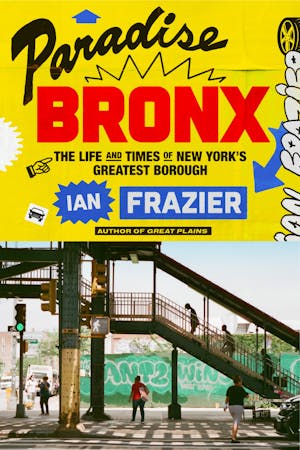Book details
Paradise Bronx
The Life and Times of New York's Greatest Borough
Author: Ian Frazier



Paradise Bronx
$32.00
About This Book
Book Details
Ian Frazier’s magnum opus: a love song to New York City’s most heterogeneous and alive borough.
For the past fifteen years, Ian Frazier has been walking the Bronx. Paradise Bronx reveals the amazingly rich and tumultuous history of this amazingly various piece of our greatest city. From Jonas Bronck, who bought land from the local Native Americans, to the formerly gang-wracked South Bronx that gave birth to hip-hop, Frazier’s loving exploration is a moving tour de force about the polyglot culture that is America today.
During the Revolution, when the Bronx was unclaimed territory known as the Neutral Ground, some of the war’s decisive battles were fought here by George Washington’s troops. Gouverneur Morris, one of the most colorful Founding Fathers, owned a huge swath of the Bronx, where he lived when he was not in Paris during the French Revolution or helping write the US Constitution.
Frazier shows us how the coming of the railroads and the subways drove the settling of the Bronx by various waves of immigration— Irish, Italian, Jewish (think the Grand Concourse), African American, Caribbean, Puerto Rican (J.Lo is one of the borough’s most famous citizens). The romance of the Yankees, the disaster of the Cross Bronx Expressway, the invention of rap and hip-hop, the resurgence of community as the borough’s communities learn mutual aid—all are investigated, recounted, and celebrated in Frazier’s inimitable voice.
This is a book like no other about a quintessential American city and the resilience and beauty of its citizens.
Imprint Publisher
Farrar, Straus and Giroux
ISBN
9780374280567


